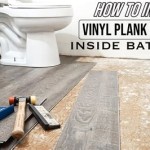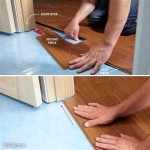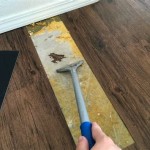Can You Put Vinyl Flooring Over Linoleum: A Comprehensive Guide
The question of whether vinyl flooring can be installed over existing linoleum flooring is a common one for homeowners considering upgrades or renovations. It’s a question that requires careful consideration of several factors to ensure a successful and long-lasting result. While it's often possible to install vinyl over linoleum, doing so without proper preparation and assessment can lead to a host of problems down the line.
The primary motivations for installing vinyl over linoleum often stem from a desire to update the aesthetic of a room without the extensive labor and cost associated with a full floor removal. Removing old flooring can be time-consuming, messy, and potentially uncover underlying issues that require additional remediation. Therefore, the appeal of a simpler, quicker installation is understandable. However, this shortcut should not compromise the integrity and longevity of the new floor.
The following sections will delve into the crucial aspects of determining the suitability of installing vinyl flooring over linoleum. This analysis covers proper assessment, preparation techniques, and identifies potential challenges, ensuring a well-informed decision-making process.
Assessing the Condition of the Existing Linoleum
Before considering any installation, a thorough assessment of the existing linoleum floor is paramount. This evaluation will determine whether the subfloor is a suitable base for vinyl flooring. Key aspects to investigate include the following:
Stability and Adhesion: The existing linoleum must be securely bonded to the subfloor. Any loose tiles, peeling edges, or areas with compromised adhesion must be addressed. Loose linoleum creates an unstable foundation, which can lead to unevenness, buckling, or premature wear of the vinyl flooring installed on top. Attempting to install over this issue can lead to costly repairs later on.
Levelness: Unevenness in the linoleum surface will telegraph through the vinyl flooring, creating an unsightly and potentially hazardous surface. Low spots, dips, or areas of significant variation must be addressed to ensure a smooth and even finished floor. Self-leveling compound can be used to remedy minor imperfections. However, more substantial unevenness may necessitate linoleum removal.
Damage and Wear: The presence of cracks, gouges, or significant wear on the linoleum surface can compromise the integrity of the new floor. Cracks can propagate through the vinyl, while gouges can create localized pressure points, leading to premature wear and tear. It's crucial to repair or address these issues before installation.
Moisture Problems: Moisture is a major enemy of flooring. Check for signs of water damage, such as discoloration, staining, or mold growth. High moisture content can damage the linoleum and the subfloor, potentially leading to mold and mildew growth, which can negatively affect indoor air quality. Installing vinyl over a damp surface is likely to result in failure of the new flooring.
Asbestos Content: Older linoleum flooring may contain asbestos, a hazardous material. Disturbing asbestos-containing materials can release harmful fibers into the air. If you suspect your linoleum contains asbestos, it is imperative to have it tested by a qualified professional before undertaking any renovation work. If asbestos is present, professional abatement is required to ensure safety.
Addressing these issues proactively will help to ensure a successful and durable vinyl flooring installation. Ignoring these factors can lead to problems that are more costly to resolve later.
Preparing the Linoleum Surface for Vinyl Installation
Assuming the existing linoleum is deemed structurally sound and free from significant issues, adequate preparation is crucial to ensure a strong bond between the old and new materials. The following steps detail how to prepare the linoleum surface:
Cleaning: Thoroughly clean the linoleum floor to remove dirt, grease, wax buildup, and any other contaminants that could interfere with adhesion. Use a suitable floor cleaner that will not leave behind a residue. A deep cleaning may be necessary to fully remove embedded dirt.
Sanding/Scoring: Lightly sanding or scoring the surface of the linoleum can create a rougher texture, providing a better bonding surface for the adhesive. This process should be performed with caution to avoid damaging the linoleum or creating excessive dust. Using a fine-grit sandpaper and a sanding block is generally adequate. Ensure proper ventilation and wear a dust mask during this stage.
Patching and Leveling: Patch any cracks, gouges, or imperfections in the linoleum surface using a suitable patching compound. Ensure the compound is compatible with both linoleum and vinyl flooring adhesives. After patching, use a self-leveling compound to create a smooth, even surface. Follow the manufacturer’s instructions carefully when applying self-leveling compounds.
Priming: Applying a primer specifically designed for flooring can significantly improve adhesion. The primer creates a barrier between the linoleum and the adhesive, preventing moisture migration and enhancing the bond. Choose a primer recommended by the vinyl flooring manufacturer.
Acclimation: Allow both the vinyl flooring and the adhesive to acclimate to the room's temperature and humidity for at least 48 hours before installation. This helps minimize expansion and contraction issues after installation.
Proper preparation is an investment in the longevity of the vinyl flooring. Skimping on these steps can compromise the adhesion and result in premature failure.
Potential Problems and Considerations
Even with careful assessment and preparation, certain inherent challenges can arise when installing vinyl over linoleum. Understanding these potential problems is vital for informed decision-making:
Increased Floor Height: Adding a layer of vinyl flooring over linoleum will increase the overall floor height. This can create issues with doorways, baseboards, and transitions to adjacent rooms with different flooring types. Door trimming might be necessary to accommodate the increased height. Baseboard removal and reinstallation may also be required to maintain a neat and professional appearance.
Moisture Entrapment: If moisture is present beneath the linoleum, installing vinyl on top can trap it, leading to mold growth and deterioration of both the linoleum and the subfloor. Ensure any moisture issues are addressed before installation to prevent this problem. Using a moisture barrier may be necessary in certain situations.
Adhesive Compatibility: Selecting the right adhesive is crucial. The adhesive must be compatible with both the linoleum and the vinyl flooring materials. Using an incompatible adhesive can result in bonding failure, leading to loose areas and ultimately requiring costly repairs. Consult with the vinyl flooring manufacturer or a flooring professional to determine the appropriate adhesive.
Telegraphing: Even with meticulous preparation, minor imperfections in the linoleum surface can sometimes telegraph through to the vinyl flooring. This is particularly true with thinner vinyl flooring options. Choosing a thicker, higher-quality vinyl flooring can help minimize this issue.
Long-Term Durability: While installing vinyl over linoleum can be a viable option, it may not offer the same long-term durability as installing vinyl directly onto a properly prepared subfloor. The existing linoleum layer can potentially introduce weaknesses that could lead to premature wear or failure of the vinyl flooring. Regular maintenance and careful use can help prolong the life of the floor.
By acknowledging these potential challenges, homeowners can make an informed decision and take appropriate steps to mitigate the risks involved.
Ultimately, the decision of whether to install vinyl flooring over linoleum requires a careful and comprehensive assessment. Weighing the potential benefits against the potential risks is crucial for a successful flooring project. In cases of uncertainty, consulting with a qualified flooring professional is highly recommended. They can provide expert advice tailored to the specific circumstances of the project, ensuring a satisfactory and long-lasting result.
It’s imperative to prioritize thorough preparation and to address any underlying issues with the existing linoleum floor before proceeding with the installation. Cutting corners may save time and money in the short term, but it can lead to significant problems and expenses down the line.

How To Install Vinyl Flooring Over Tiles Linoleum Thrift Diving

How To Install Luxury Vinyl Tile Over Linoleum

How To Tile Over Linoleum Floors Correctly

Can You Put Vinyl Plank Flooring Over Linoleum 2025 Today S Homeowner

Installing Luxury Vinyl Over Existing Tiles Choices Flooring

How To Install Luxury Vinyl Tile Over Linoleum

How To Install L And Stick Tile Over Linoleum My Homier Home

Transform Your Home Installing Vinyl Flooring Over Ceramic Tiles City Wall And Floor

Can You Lay Tile Over Linoleum Rubi Blog Usa

How To Lay Sheet Vinyl Flooring
Related Posts








